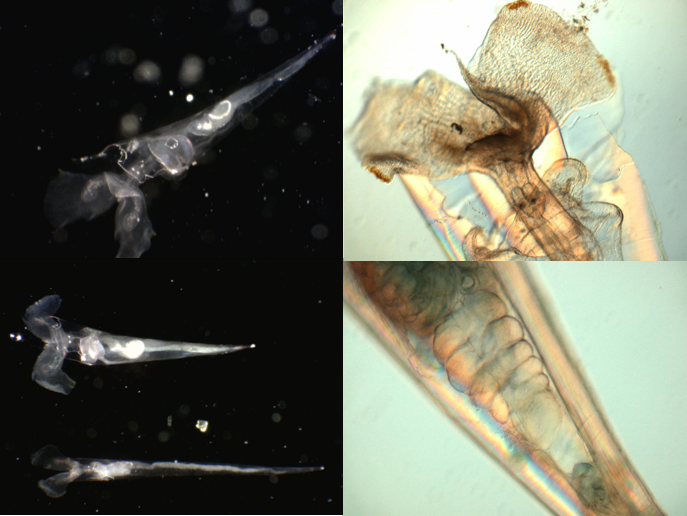Summary
Creseis acicula is a tropical species of holoplanktonic gastropod, commonly found in the shallow pelagic waters of the Great Barrier Reef. C. acicula belongs to a group of animals known colloquially as ‘pteropods’ as affectionately as ‘sea butterflies’. Both names are derived from the presence of delicate, gossamer wings, which the animal uses to ‘fly’ through its marine habitat. An elongated transparent needle-like shell defines the genus Creseis, though there are subtle differences between species and forms. Though known by the name ‘sea butterfly’, their feeding mechanism is less innocuous and superficially resembles that of terrestrial spiders. A large spherical mucosal web is deployed to trap unsuspecting prey items floating in the plankton, including diatoms, dinoflagellates and radiolarians.
Creseis is a protandric hermaphrodite, as they develop from males into hermaphrodites and then females. The veliger, which is the juvenile stage of all gastropods, hatches directly from planktonic egg masses in the water column. This study focused on the ecology of the animal, making observations on relative abundances of adults and veligers temporally across a tidal cycle. It was found that higher abundances of adult and juvenile Creseis were found in association with higher densities of the diazotrophic cyanobacterium, Trichodesmium. Further research is required to establish true correlation. The delicate shell is made from aragonite, a form of CaCO3 that is highly soluble. Subsequently, much of the current research on potential threats to thecosomatous pteropods focuses on the potential impacts of ocean acidification and elevated atmospheric CO2 concentrations.
 |